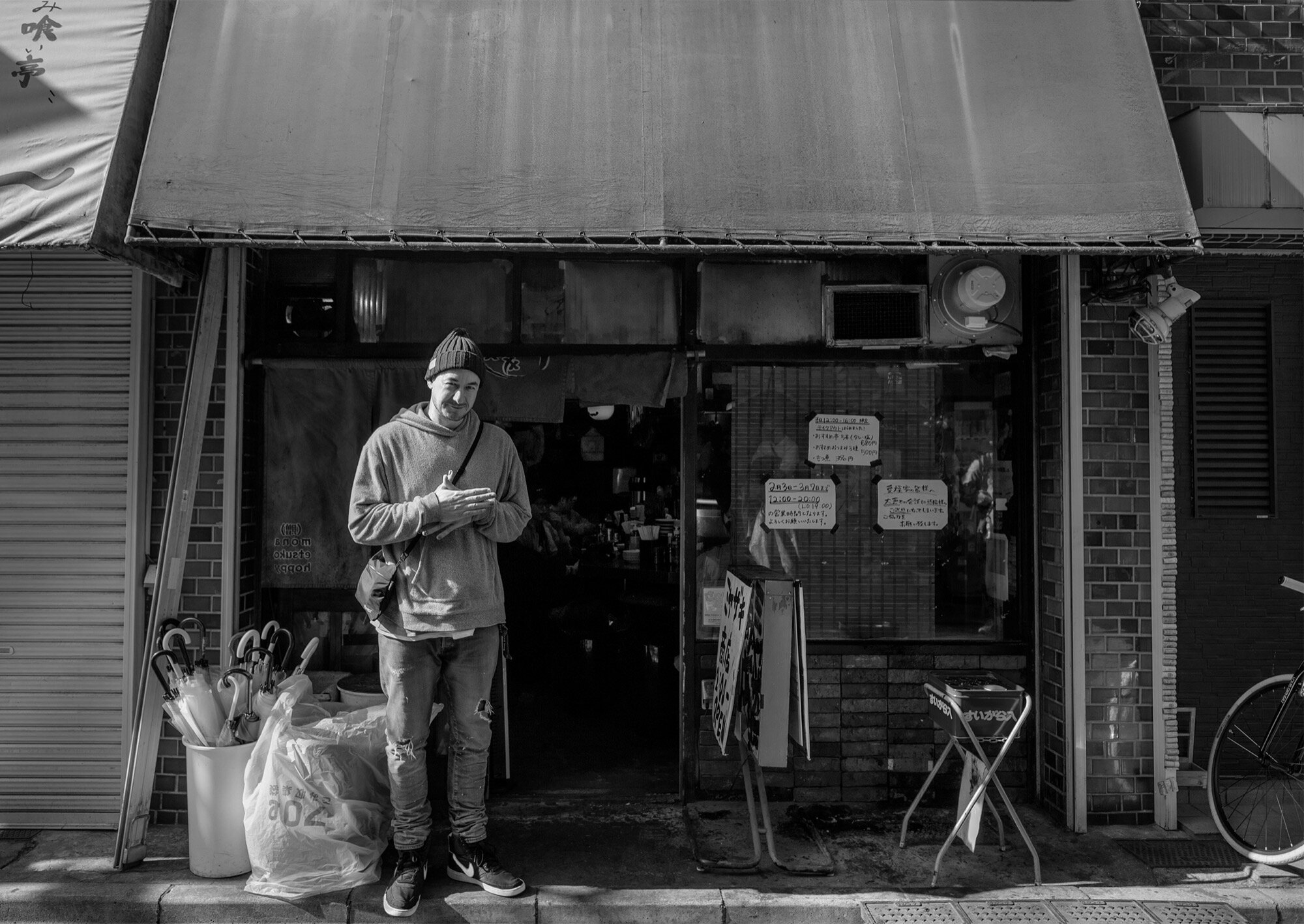THE CULT OF RAMEN JIRO

CULT: A social group that is defined by its unusual religious, spiritual, or philosophical beliefs, or by its common interest in a particular personality, object, or goal.
JIRORIAN: A social group of enthusiasts centered around Ramen Jiro and its founder Yamada Takumi-san.
The world of ramen is probably the last place anyone might think would foster the growth of a cult, but in fact, within the depths of ramen culture hides a subsect with an unusually large, radical following that remains largely unknown to Western food media. Calling themselves “Jirorian”, these hardcore ramen obsessives scour Japan to eat at the 41 locations of a ramen shop known simply as “Ramen Jiro''. A quick google search and you’ll be surprised that such a simple ramen franchise has fostered such an unhealthy growth as the only stand-out feature of their bowls is a mountain of veggies and nothing else really to suggest a religious awakening.
However, once you finally make your way to a Jiro, you’ll quickly see these devotees in the wild and when you experience Jiro first hand, only then will you begin to understand how this small shop fostered such a maniacal following. Until you do, let this be your introductory guide to Jirorians and the House of Jiro.
Calling themselves “Jirorian”,
these hardcore ramen obsessives scour Japan to eat at the 41 locations of a ramen shop known simply as “Ramen Jiro''.
The Roots
Before we get into the dedicated fan base of this ramen subculture, let us first introduce you to the history of how this shop began. Yamada Takumi-san, originally a Japanese chef, started the shop in 1968 in the Meguro area of Tokyo near Toritsu Daigaku station. After seeing how popular ramen was at the time, he thought it would be “a quick and easy way to make money.” He was given the small, narrow shop from his grandfather and figured it was the perfect space for a standing ramen bar right near the station. However, without any prior knowledge of ramen making, the shop flopped hard. In order to make ends meet, he closed the shop during the day to go work part-time for a ramen shop just to earn rent and learn ramen while opening at night to put it into practice.
As luck would have it, the shop was located across from a dormitory housing a bunch of college-age kids who happened to come by one evening as a drunk Yamada-san contemplated closing his shop for good. They came in and tried to convince him to remain open by promising 30 or so students will come by every evening to eat his ramen. It soon became an experiment with these kids, who followed through on their promise, using them as guinea pigs to test his ramen on. Day by day, Yamada-san found his groove and began serving ramen that was garnering a local fanbase. However, it wasn’t until the shop moved to Mita station near Keio University did it truly explode in popularity.
The Iconic Exterior Signage from the Mita Honten
Once he set up shop near the prestigious Keio University, Yamada-san unknowingly began what would soon become the cult of Ramen Jiro. What Yamada-san didn’t realize at the time was that his ramen was the perfect meal for the young university students in the area. Jiro was known for cheap, filling bowls and upon the request of the starving, money-strapped students who frequented his shop, the portion sizes continually grew while the prices [relatively] remained the same.
Even now, a bowl of Sho Ramen [small ramen in Japanese] will be less than 800 yen [$8 USD] and will far outweigh any bowl you find at another ramen shop for the same price. Word about these cheap bowls of ramen spread throughout the Tokyo university community and soon it wasn’t just Keio students, but students from all over the city coming to try a bowl of Ramen Jiro. And like a tobacco company targeting the youths for a lifelong addiction, Jiro instilled a love for their bowls upon these easily manipulated youths which lingered long after they graduated college.
The simple counter at the Mita Honten in a muted vermillion void of any luxuries.
Ramen Jiro began as a way to get cheap calories, but it quickly became a weekly dependency for many which continued on as the same university students became Tokyo salarymen frequenting their old stomping grounds for a nostalgic bowl. And this continued fixation for a routine bowl of Ramen Jiro became the catalyst for its expansion as business grew and apprentices began opening their own branches of Ramen Jiro in other parts of Tokyo. As more shops began opening, the cult grew and the reach soon spanned 41 locations across 10 prefectures. What started as a small shop with a popular university fanbase was soon growing into a nationwide phenomenon. However, you might be thinking, if the growth was so widespread, why would it be just a cult following? Wouldn’t this have become mainstream by now? Well to get into that, you’ll need to know what made their ramen special.
The Ramen
The Jiro style is characterized visually with thick slices of pork chashu, known as Buta, and the large volume of Yasai, or steamed bean sprouts and cabbage. Ninniku [garlic] and Abura [pork back fat] also comes as a free topping at every Jiro location in addition to the Yasai and extra tare seasoning known as Karame. Soup is a tanrei, or clear pork bone broth base, in contrast to a Hakata Tonkotsu style ramen which is a paitan, murky pork bone soup. The broth is typically steeped from pork backbone, pork femur, pork used for the char siu [either belly or pork shoulder] as well as some offcuts of vegetables and garlic/ginger to bring some sweetness and eliminate some of the funk the bones produce. Noodles are made in house and have a distinctly thick and curly texture which has become iconic with the style. All of the Jiro locations follow these fundamentals, but the master of each shop will incorporate their own twist and style to the bowl such as the emulsification level of the soup and/or thickness of the noodles. Sometimes you’ll even see shop specific toppings, which will rotate seasonally, enticing Jiro fans for repeat visits.
Bowls come in two sizes, small and large, but don’t let the size names fool you. A small can range from 345g to as much as 907g depending on location while a large will often be twice that amount. With the amount of fat incorporated into the soup, you’re looking at a meal that easily surpasses the daily recommended calorie limit of a typical man.
small can range from
345g
to as much as 907g DEPending on location while a large will often be twice that amount.
And yet, back in the early days of Jiro at Mita Honten, the portion sizes weren’t enough and the university students were continuously asking for more. In order to please the hungry diners while keeping the costs to a minimum, a ritualistic “call” was invented for the aforementioned free toppings to allow customers to customize their bowls and increase the volume of their meal. The “call” is the answer to a simple question, “Ninniku iremasuka?”, or “Would you like garlic?”. When your bowl of ramen is ready, the master will ask this question in order to figure out how much you want of the four free toppings; garlic, yasai [vegetables], abura [pork back fat], and karame [tare seasoning]. Here the popular catchphrases “mashi” and “mashi mashi” were popularized. The calls are as follows:
Ordering options allow you get small with extra meat if you can handle it!
“Sonomama” [そのまま] or as-is for no extra toppings. This means just a small amount of veggies with no garlic, back fat, and karame.
“Xx sukuname” [xxすくなめ] or less of xx topping. Given that “Sonomama”, or as is, means no toppings [besides the veggies], it’s a bit weird that “Sukuname'' means smaller portions, but it does and you’ll receive a small spoonful of any of the toppings you call for.
“Ninniku, Yasai, Karame” or any combination besides all four would give you a normal portion of each topping you call for. So this call will give you a healthy portion of garlic, veggies, and tare seasoning. If you were to call “Yasai, Abura” you’d get veggies and pork back fat, etc.
“Xx Mashi” or xx extra, would give you an extra portion of the topping you called for. So, “Niniku Mashi, Yasai, Karame” would mean extra garlic and a normal portion of the veggies and tare seasoning. “Ninniku, Yasai Mashi, Karame” would mean an extra portion of both garlic and veggies and a normal portion of the tare seasoning, etc.
“Zen Mashi” or all extra would mean you get the extra portion for all four free toppings.
“Xx Mashi Mashi” would be even more portions of the toppings. Just like the “xx Mashi” call, whatever you put before “Mashi Mashi”. So “Ninniku Abura Mashi Mashi, Yasai Mashi, Karame” would be an extra, extra portion of garlic and pork back fat, extra portion of veggies, and normal serving of the tare seasoning.
“Zen Mashi Mashi” would be an extra, extra serving of all four toppings. If it’s your first time at Jiro, we would not recommend getting this, even if you are incredibly hungry. Jiro locations have been known to ban customers who order “Zen Mashi Mashi” and leave bits in the soup.
The call has been an intimidating aspect of Jiro and a sort of hazing ritual with how painstakingly difficult and nerve-wracking it can be. You’re essentially put on the spot, as the master asks each customer one by one along the line as bowls are prepared in batches. All eyes and ears are on you and you do not want to make a mistake and risk being snickered at, or even worse, yelled at for holding up the line. Ordering a large and leaving noodles is a big no-no as is ordering extra toppings without finishing. Severe offenders are shown a lifetime ban. With all this in mind, if you are able to make your order successfully and finish your meal without leaving an excess amount in your bowl [soup is fine], the hazing ritual is complete and you’ll be asking yourself why you just put yourself through such torture.
The “Shiru”-Nashi” [No Soup] with toppings at Yokohama Kannai Honten.
The inordinate amount of food will leave you in an inevitable food coma and the only thing on your mind as you fall into a deep slumber will be those thick noodles soaked in pork fat laden soup sitting in your stomach. And then you wake up, with a stench of garlic still lingering on your breath reminding you of the previous night’s bowl. You fall asleep at night and wake up in the morning thinking of Jiro. The seed is planted. After your first bowl, you thought you’d never put yourself through that torture again. But then days go by and you’ll start thinking of when you can have it next. Before you know it, you’re waiting in the long arduous queue again, purchasing your ticket, and making your “call” wondering if you can finish an extra serving of vegetables.
“you’ve gone too deep and you’re now another Jirorian in the House of Jiro”
You’re not the first and you definitely won’t be the last in a long line of hungry diners converted into Jiro worshippers. Nowadays there are fan sites, blogs [Jirogs as they are called- a combination of the Ji in Jiro and -ogs of blogs], twitter accounts, and Instagram personalities all of whom document their love for this simple ramen franchise and soon you’ll be following them, looking on, dreaming of your next bowl. Then, you’ll stumble across the Jiro cult membership card, a fan-made stamp rally that helps Jirorians and newly found Jiro lovers to document and keep track of the 41 different Jiro locations they’ve been to. An obsession begins and you’ll join your fellow Jirorians in filling the stamp, visiting each and every one of Ramen Jiro’s locations. Once you do, you’ll find that you’ve gone too deep and you’re now another Jirorian in the House of Jiro.
The Shops
The 41 Jiro locations are listed in the order they opened as follows;
The Jirorian stamp rally card for the true followers willing to visit all locations
Mita Honten, Meguro, Sengawa, Kabukicho, Shinagawa, Otakibashi, Kannana Shin Daita, Yaen Kaido, Ikebukuro, Kameido, Keikyu Kawasaki, Fuchu, Matsuo, Mejirodai, Ogikubo, Kaminoge, Keisei Ookubo, Kannana Ichinoe, Sagami Ono, Yokohama Kannai, Kanda Jinbocho, Koiwa, Hibarigaoka, Sakuradai, Tochigi Kaido, Tachikawa, Senju Ohashi, Ibaraki Moriya, Shonan Fujisawa, Nishidai, Nakayama, Sendai, Sapporo, Aizu Wakamatsu, Niigata, Kawagoe, Kyoto, Koshigaya, Maebashi Chiyoda, Chiba, and Oomiya Kouen.
Due to the sheer number of locations, it would be a lengthy read to describe all 41 shops so the following are the 5 most popular destinations and ones you should hit if you’re looking to join the cult of Jiro yourself.
Mita Honten
The holy land of Jiro, Mita Honten is the birthplace of the style and the location every Jirorian visits to show respect to the Master, Yamada-san. As the originator of the style, Jirorians consider the visit to this location euphoric with lunch time visitors being able to witness Yamada-san himself in action. In the evenings, Yamada-san leaves the shop to his son, nicknamed “Jr” who will inevitably take over this long standing religion once Yamada-san decides to hang his apron for the last time.
The only thing offered here is the ramen which comes in either small or large portions and in varying amounts of regular, extra, and double. As described earlier, don’t even think to order a large portion if you’re not absolutely sure you can finish as you will get a stern, even scary warning if you leave too much noodles in the bowl. First-timers are not allowed to order the large bowl. and unfamiliar faces will be asked ahead of time if you’ve been to a Jiro before. Don’t make the same mistake as the rest of the no-fly zone members and go for a comfortable small for your first visit. You’ll never know when Yamada-san, who is quickly approaching his 80s, will sail off into the sunset, so make your way to the Mecca that is Mita Honten while he’s still there.
Hibarigaoka
In terms of regular ramen, no shop comes even close to Mita Honten’s popularity than the Hibarigaoka location in West Tokyo. Hibarigaoka is the gold standard of Ramen Jiro franchises and is one of a select few that has been chosen as a Tabelog Top 100 shop so it gets the recognition from both Jirorians and Raotas, or Ramen Otakus [ラヲタ]. The queues are outrageous here as it is a popular location among the fanatics so be sure to come early to secure yourself a seat. Waits of up to two hours aren't out of the ordinary on Fridays and Saturdays.
What makes Hibarigaoka special and a favorite among the Jirorians is the soup which is more emulsified than the other shops. The emulsification leads to a creamier soup than the other shop locations and has a devout following even within the Jirorian community. The Yasai, or vegetables are cooked to a soft finish, pairing with the cloudy soup and is a unique twist on Jiro that many make the voyage to try. The master is one of the nicest of the 41 so if you’re a bit weary or timid of making a Jiro visit, this would be the perfect location to calm your nerves.
Kanda Jinbocho
One of the favorites among central Tokyo based Jirorians is the Kanda Jinbocho location conveniently located in between the two stations from which it takes its name. A Kanda location previously existed, but later branched out of the Jiro circle making this location the one and only shop in the area. However, due to its central location, this is probably one of the longer queues and regardless of the day, you can expect lines of up to 50 people at any given time. Best bet is to come 30 minutes before opening because peak lunch hours can garner a wait upwards of two hours.
The ramen itself is a throwback to the original served at Mita Honten, but with a little extra pork back fat to give the soup a decadent, oily aftertaste. The Karame, the Jiro rendition of the shoyu tare, is on the heavy side so it is a bit saltier than other franchise locations. In order to counteract that saltiness, Kanda Jinbocho offers a raw egg as topping to enjoy the bowl sukiyaki style, dipping the noodles into the egg to dampen the blow. Another important thing of note about the location is that the portion sizes are one of the biggest by far of the 41 locations so do not get the large if this is your first ever Jiro visit...in fact don’t even try if it’s your second time- seasoned vets only.
Hachioji Yaenkaido 2
One of, if not the most popular Jiro franchise locations, Hachioji Yaenkaido marches to the beat of their own drum as it is home to the most eclectic menu of the 41 shops. While Mita Honten only had their iconic ramen on the menu, Hachioji Yaenkaido offers Tsukemen [dipping ramen where the soup and noodles are served separately] as well as a plethora of toppings making the ramen combinations endless.
It’s hard not to recommend the tsukemen at Hachioji Yaenkaido, but if it’s your first time, go for the main ramen. We are sure by the time you’re finished, you’ll be thinking of your next visit anyway so be sure to come back for the tsukemen. Negi, or thinly sliced Japanese leek, is the topping of choice at Yaenkaido and is seasoned in peppery, shoyu and sesame seed oil. Regardless of ramen or tsukemen, be sure to order this extra paid topping for the full Hachioji Yaenkaido experience.
Yokohama Kannai
While Hachioji is popular for their tsukemen, the Yokohama Kannai location may be best known for their shirunashi, or no soup rendition of Ramen Jiro. While they also offer both regular ramen and tsukemen, no other shop comes close to the popularity of Kannai’s shiru nashi ramen. Located a short walk from Kannai station, this is by far the longest of the queues. We said the same about the other shops as well, but on peak weekends, you could find yourself waiting upwards of 3 hours for your bowl. Plan accordingly and try making a visit during the week and avoid the weekends if possible.
What makes the shiru nashi, or no soup ramen so popular at Kannai is their topping options, the most popular ones being the cheap powdered parmesan cheese and homemade kimchi. In addition, Kannai also offers the beni shouga, or red pickled ginger as a free topping to go along with the garlic, vegetables, karame, and abura for even more customization to your bowl. Thoroughly mix your order when it arrives and prepare yourself for the most decadent no soup ramen you’ll ever have.
And there you have it. If we haven’t convinced you to join the cult of Jiro already, we hope that I at least tempted you to visit one of their many locations.
About the author:
Cody Mizuno travels around Japan to eat, photograph, and write about ramen in his free time. He runs the @ramenguidejapan Instagram account, Youtube, and website.


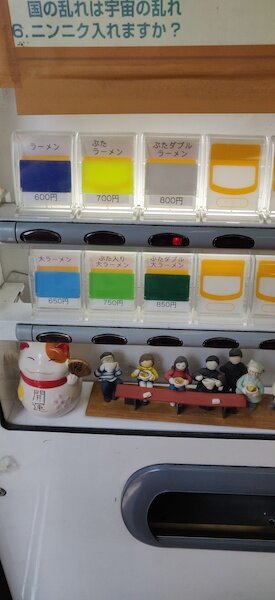
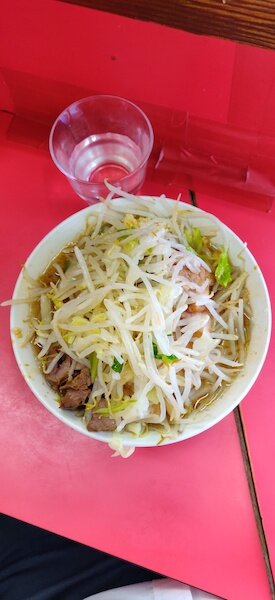
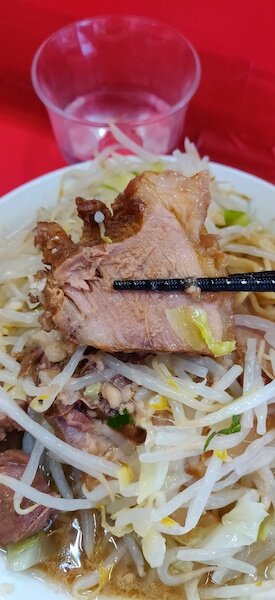
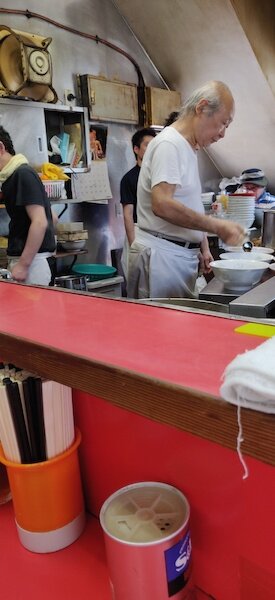


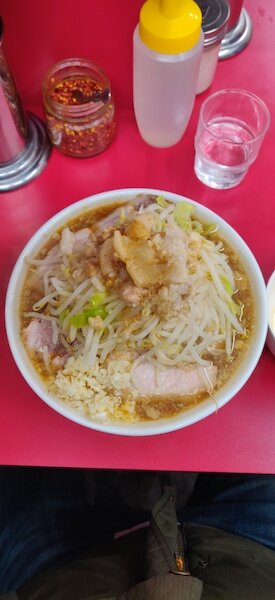
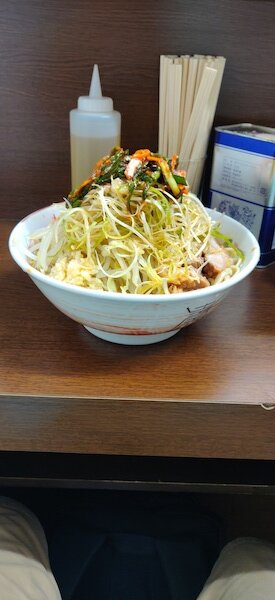
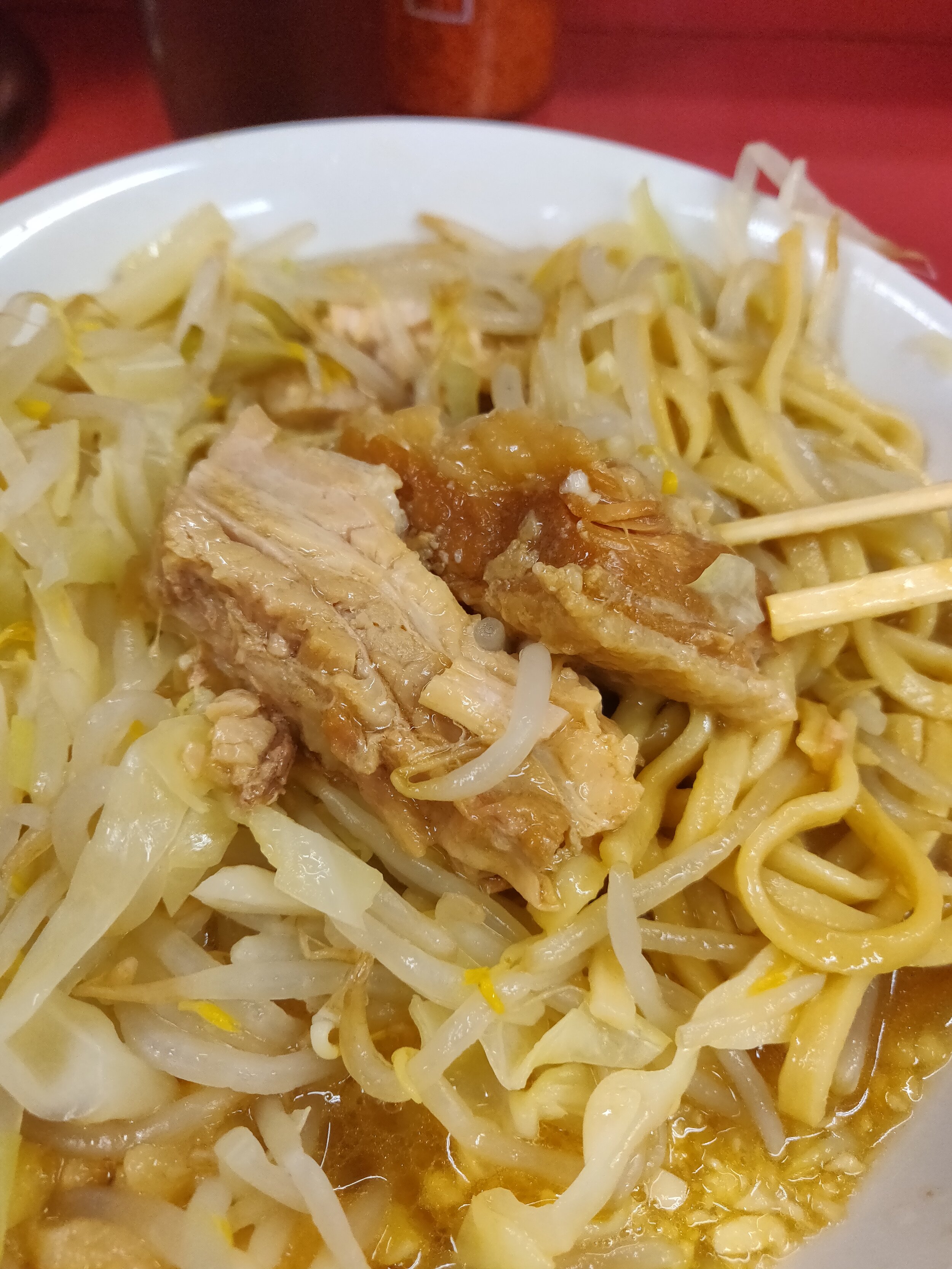




![The “Shiru”-Nashi” [No Soup] with toppings at Yokohama Kannai Honten.](https://images.squarespace-cdn.com/content/v1/57825361440243db4a4b7830/1630306507817-1NYGM25PXY4DW4FO2CCV/IMG_20200824_125622.jpg)












